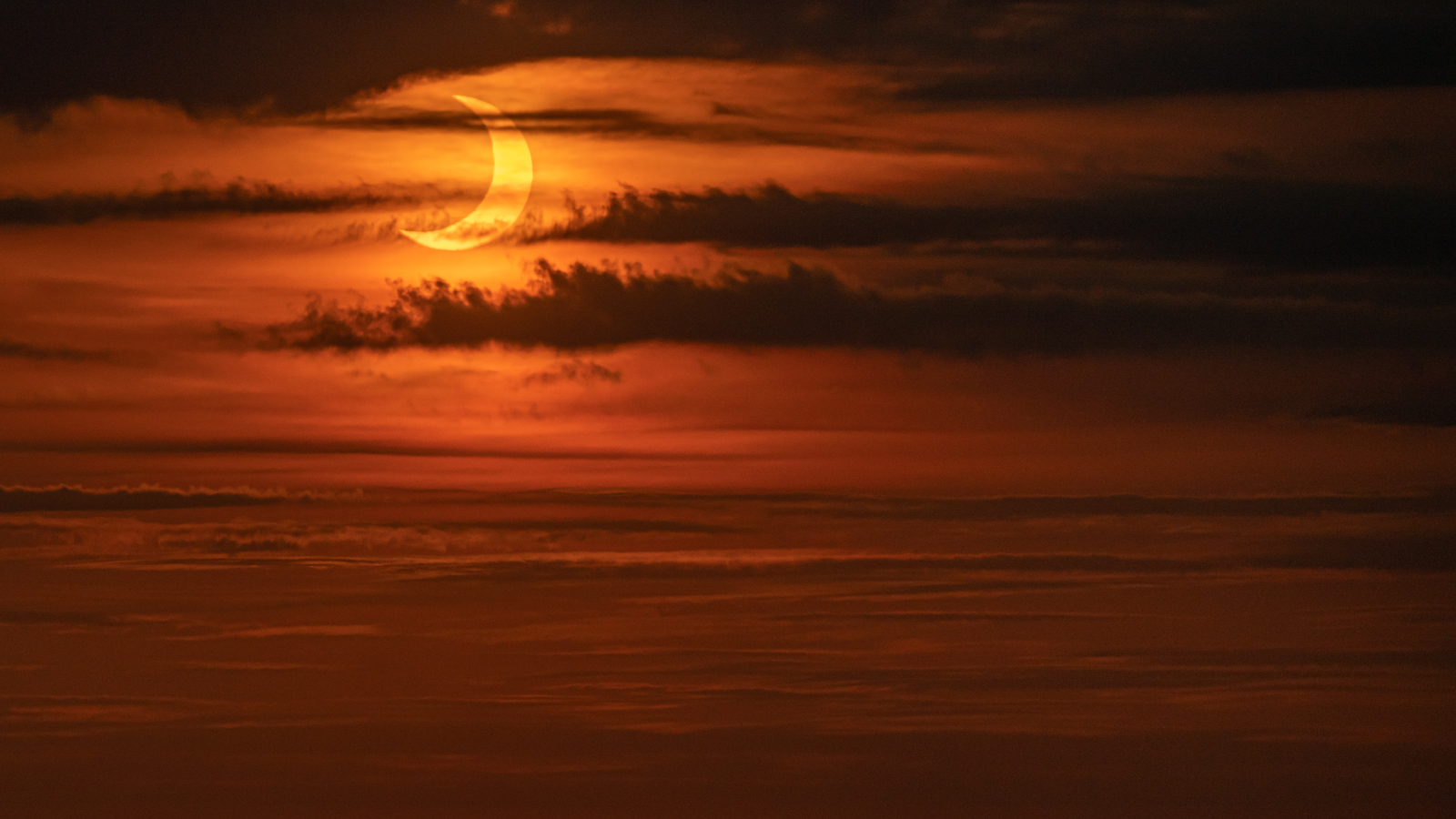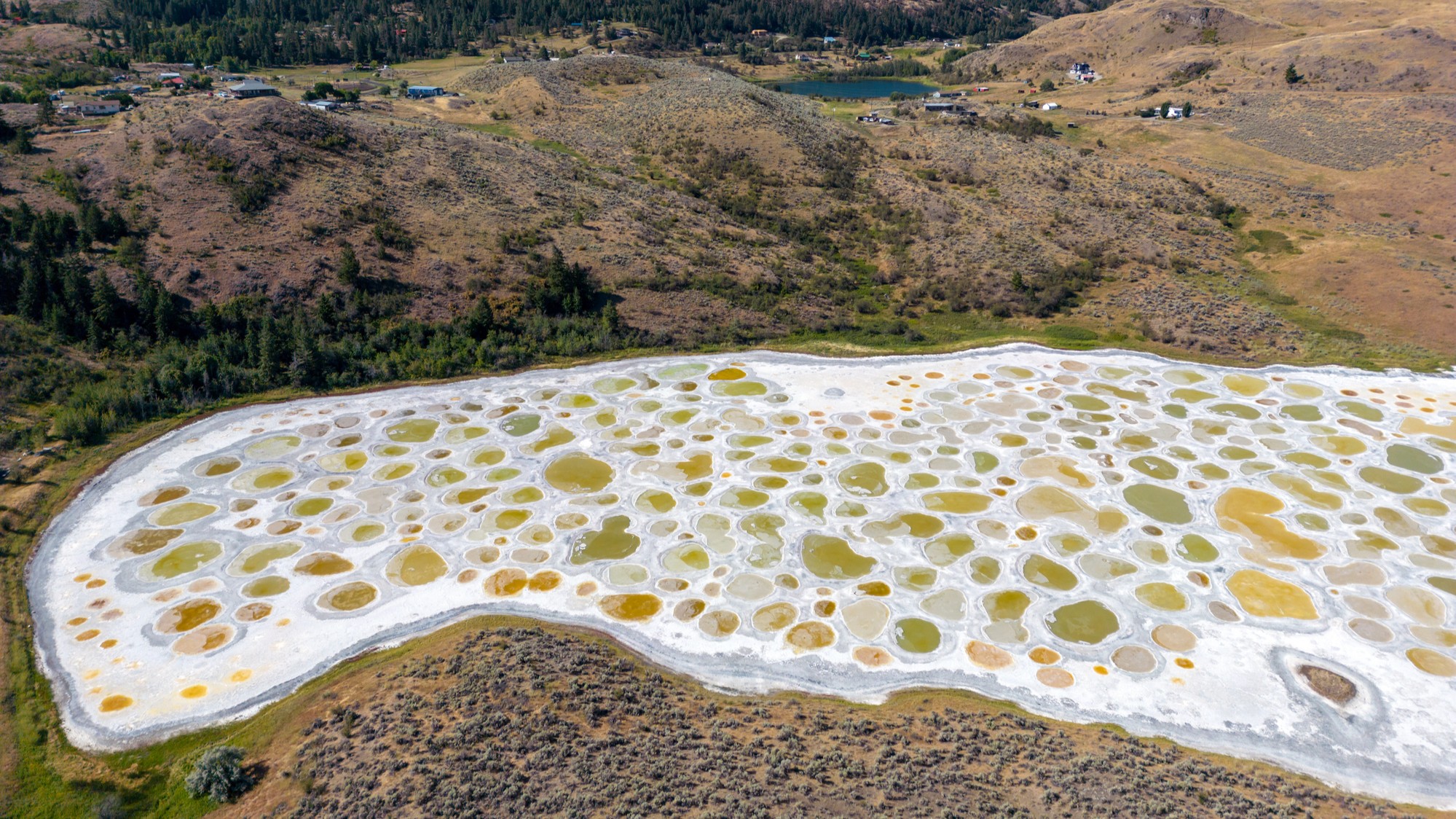A 'crescent sunrise' solar eclipse is coming this weekend. Here's where to see it.
This Sunday, a partial solar eclipse is taking place just hours before the September equinox flips Earth's seasons. Here's where a few lucky humans will be able to see it.

Lost in the glare of the sun on Sunday (Sept. 21), the new moon will rise without anyone in the Northern Hemisphere noticing. However, early birds in New Zealand and the South Pacific — and a handful of people (and millions of penguins) overwintering in Antarctica — will see a dramatic "crescent sunrise" as an eclipsed sun emerges from the horizon. It's as dramatic a sight as it's possible to see this side of a total solar eclipse.
Dubbed the "equinox eclipse," it will occur within the same 24 hours as September's equinox, the moment when the sun appears to cross the celestial equator, heading southward to bring spring to the Southern Hemisphere as autumn begins in the north.
While the equinox occurs at 2:19 p.m. EDT (18:19 UTC) on Sept. 22, the partial solar eclipse — the second one of 2025 — will happen from 1:29 p.m. to 5:53 p.m. EDT (17:29 to 21:53 UTC) on Sept. 21. That translates to sunrise on Monday, Sept. 22, local time in Antarctica, New Zealand and the South Pacific.
Unlike a total solar eclipse, where the moon completely blocks the sun and makes it possible to see the solar corona (our star's wispy outer atmosphere) with the naked eye, a partial solar eclipse leaves a portion still visible. The result is a crescent sun, which must be viewed through solar eclipse glasses at all times. While the sky won't darken, the spectacle of a heavily eclipsed sun on the horizon promises unforgettable views.
Related: What is an equinox, and why does it happen?
For this event, the coverage of our star's visible surface will be unusually deep, with up to 86% of the sun obscured in parts of Antarctica's Ross Sea and southern New Zealand. One of the key viewing locations on an otherwise remote eclipse track will be Dunedin, New Zealand, where the sun will rise already eclipsed at 6:27 a.m. NZST, reaching a maximum of about 72% coverage about 40 minutes later.
Only about 400,000 people will be able to see an eclipse of over 70%, according to Timeanddate.com. Further north in Auckland, the sun will rise already partially eclipsed at 6:10 NZST, and the maximum eclipse reaches 61% while in the South Pacific, viewers in Fiji and Tonga will see a much smaller partial eclipse at sunrise. From Hobart, Australia, a 3% partial eclipse will be visible just after sunrise at 6:00 a.m. AEST.
Get the world’s most fascinating discoveries delivered straight to your inbox.
The next solar eclipse on Earth will take place on Feb. 17, 2026, when an annular solar eclipse will create a "ring of fire" visible for up to 2 minutes and 20 seconds as 92% of the sun is blocked by the moon at its most distant. Unfortunately, the stunning ring of fire will only be visible from a remote region of Antarctica. Sometimes penguins have all the luck.
Editor's note: This article was updated on Sept. 16 to include additional information about the upcoming eclipse

Jamie Carter is a freelance journalist and regular Live Science contributor based in Cardiff, U.K. He is the author of A Stargazing Program For Beginners and lectures on astronomy and the natural world. Jamie regularly writes for Space.com, TechRadar.com, Forbes Science, BBC Wildlife magazine and Scientific American, and many others. He edits WhenIsTheNextEclipse.com.
You must confirm your public display name before commenting
Please logout and then login again, you will then be prompted to enter your display name.


